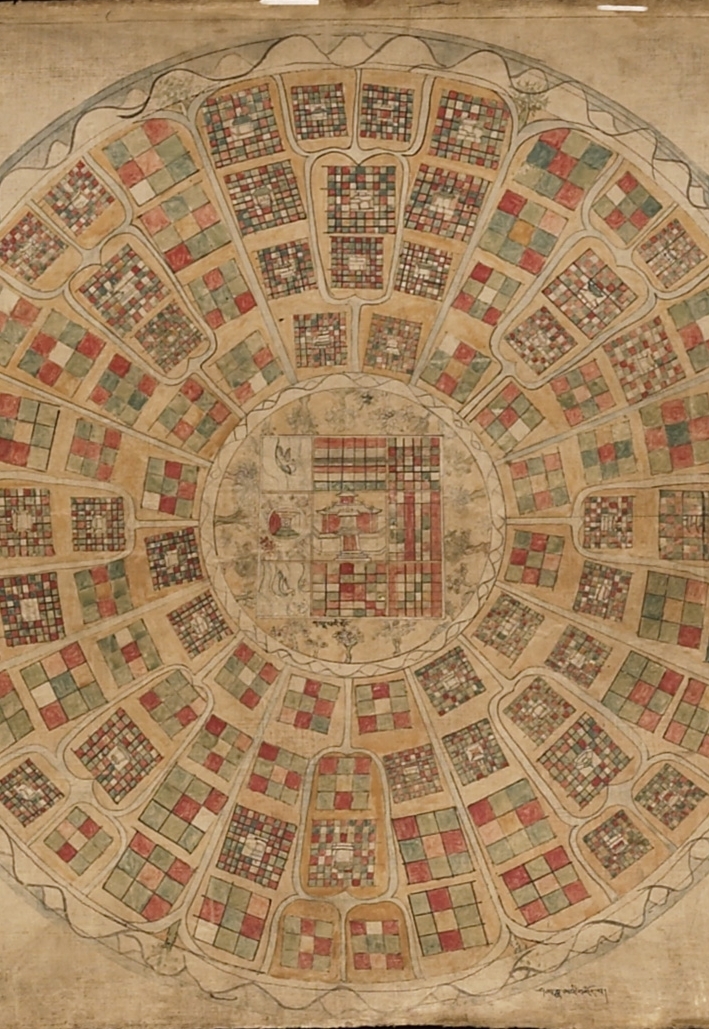
This eight-panel, double-sided scroll presents diagrams exploring various aspects of the cosmos as described in the Buddhist text called the Wheel of Time (Kalachakra) Tantra. This tantra emphasizes the correlations between the outward appearances of the universe and the human body.
Kalachakra Cosmos
This fully annotated diagram of the Buddhist cosmos renders all of the essential elements of the Kalachakra system’s understanding of upper-world topography, and displays them both from above and from the side. It focuses particularly on Mount Meru, which is believed to sit at the center axis of the cosmos. Meru’s base, or foundation, consists of four round disks that represent (from bottom to top) air, fire, water, and earth.
The Cosmic Man
The human body represents a complex inner cosmology with direct correlations to the universe. Branching off from the vertical central channel of this “cosmic man” are six centers, or chakras, associated with the six elements: space, located at the crown; water, at the forehead; fire, at the throat; wind, at the heart; earth, at the navel; and awareness, at the genitals. In addition to these primary chakras, the painting also depicts the chakras at the main joints—shoulders, elbows, wrists, hips, knees, and ankles— which correlate to the twelve signs of the zodiac. The figure’s fingers, correspond to the five elements.
19 x 79 in.
C2009.9, HAR61200
- https://dev.rubinmuseum.org/images/content/788/c2009.9har61200-(2)__zoom.jpg
- https://dev.rubinmuseum.org/images/content/788/c2009.9har61200__zoom.jpg
- https://dev.rubinmuseum.org/images/content/788/c2009.9har61200-(2)__zoom.jpg
- https://dev.rubinmuseum.org/images/content/788/c2009.9har61200__zoom.jpg

__slider.jpg)

